In the photo above, the Curtiss F3 3.5″ (left) has a black G10 scale, while the Hinderer XM-18 3.5″ (right) has a jade colored G10 scale. Right off the bat, the differences in their design philosophy become apparent. The F3 is designed to be a “Hardcore EDC knife” – a knife designed to be used “every day” for a variety of tasks. The XM-18 has a more specialized design philosophy and is made for military, law enforcement, and first responder communities. Ergonomically speaking, the XM-18 has some design features which make it slightly better suited for a defensive tool. The XM G10 pattern provides much more traction/grip than the G10 handle scale found on the F3, which is only lightly textured and relatively smooth by comparison. To be fair to Curtiss Knives, there are other higher-traction G10 and titanium handle scale options available – and I may go that route on my next F3. In addition to the G10 differences between these two knives, there’s also a difference in their relative size and shape. The longer more contoured XM-18 provides a slightly more reassuring purchase in hand as compared to the F3. Between the two, the XM-18 would be my first choice if (God forbid) I ever had to defend myself with my knife. That said, I have every confidence in the F3 were it called on in a defensive role – it might not be my first choice, but it’s certainly not a bad choice, either. Where the F3 excels (particularly for my own personal needs) is providing maximum blade length in a minimum package.
I work in an office environment and often wear slacks or suit pants. On the weekends, it’s no problem for me to clip a knife to my pocket and have virtually any size knife I want with me. But during the work week, clipping a knife to the pocket of suit pants just doesn’t quite work. So it’s important that that the knife I have with me during the work week not only fit inside the pocket of work attire, but also that it doesn’t bulge or “print.” The larger, thicker handled XM-18 doesn’t do nearly as well as the Curtiss F3 in this regard.
I’ve owned several XM-18’s (having since sold them all) and I found them less than ideal to carry inside my pocket while wearing dress attire – often I didn’t carry the knife with me for that reason. The shorter, thinner, and lighter F3 by comparison disappears in my pocket and carries extremely well in dress attire. As an NRA Certified Instructor, my students often ask me “which is the best gun for me to carry?” To this I usually respond “the gun you have with you when you need it is the best gun. By that I mean buy a gun that’s easy for you to carry each and every day. If I were in a gun fight, I’d much rather have a gun with me that had lots of firepower (rounds in the magazine) and at least 9mm in caliber. But guess what? I can’t always carry my high capacity 9mm hand gun. That’s why I have a .380 “pocket pistol” that easily fits in the pocket of any pants or shorts I might wear. My .380 pocket pistol might not be an ideal option in a gun fight, but it’s certainly better than having not having any gun in a potential gun fight. I began to realize that the same principle applied to the knife I was carrying. The Curtiss F3 is easy to carry, so I always have it with me.
Turning to the backside of these two knives, we see more similarities, and more than a few differences:
Both of these knives are titanium frame locks with a stone wash finish. Both also have a matching stone wash titanium pocket clip. While the XM-18 is a perfectly serviceable, functional pocket clip, there isn’t anything “special” about it. The F3 pocket clip is far more decorative/ornate, incorporating the Curtiss Knives “reticle” logo (Dave Curtis is a fan of the shooting sports too). The Hinderer XM-18 does have the advantage of having the ability to move the pocket clip on the knife handle for either tip up or tip down carry. However, as I only carry my knives tip up, this isn’t a particularly relevant advantage for me personally.
Dave Curtiss is currently using Bohler N690 blade steel on the F3. Before purchasing an F3, I didn’t know much about N690 as I’d never had a knife made with that particular blade steel. N690 is sometimes compared to 440c, but most consider N690 more comparable to VG10 blade steel. In fact, it’s considered an “enhanced” version of VG-10. Like S35VN used in the current generation of the XM-18, N690 is considered a super steel by virtue of the Crucible Particle Metallurgy Process (CPM). Here’s a chart that shows N690’s chemical make up:
Neither chemistry or metallurgy are areas of expertise for me, and neither do I have the testing facilities necessary to perform any sort of valid testing trials for knife steel attributes like, hardness, sharpness, chipping, or edge retention. On paper, S35VN is likely the better steel as compared to N690, but keep in mind that real world steel performance can vary greatly depending on the maker’s heat treatment of the steel. I’ve used S35VN blade steel knives from both Chris Reeves and Zero Tolerance and I can’t really say anything bad about it. When S35VN first came on the scene as Chris Reeve’s personally developed choice to replace S30V in his knives, I had high hopes/expectations. But I’ve never seen a discernible difference in edge retention between the two, and neither were particularly easy to sharpen. According to this comprehensive testing, N690 ranks in the same category as both S35VN and ELMAX which matches my own experience. It took me about a month of using my F3 before I felt the need to sharpen it on my Work Sharp and I was impressed after doing so. It sharpened relatively easily, and sharpened quite well. Is it better or worse than S35VN in my experience? I don’t have enough time with it to say for certain – but I’m not at all displeased with it. What I will say is that previous generations of the XM-18 that I’ve owned used Duratech 20CV blade steel and I do prefer it to S35VN. I’m not sure why Hinderer changed from Duratech 20CV but I personally feel it was a mistake. In terms of the F3, I think the asking price justifies a more premium blade steel – such as Bohler M390 which Dave Curtiss has recently used in limited edition runs on the F3. If Bohler M390 becomes the defacto choice for the F3, then this would be another point in favor of the F3 over the current generation XM-18 as on paper M390’s chemical composition suggests superior performance to S35VN in key areas of hardness and edge retention.
Perhaps the biggest difference between the F3 and the XM-18 in their functionality is the blade detent strength. The XM-18 has a much lighter detent – so much so that the blade can actually deployed like a gravity knife (as demonstrated in the below video). The lighter detent means that for a consistent blade deployment to full lockout, one will likely have to incorporate a wrist flip with either the thumb stud or flipper deployment. The F3 by comparison has a much stronger detent, so more force is required to overcome the detent, which translates to a more forceful, consistent blade deployment. The IKBS bearing system in the F3 is considered more sophisticated that the phosphorus bronze bushings used in the XM-18 which also contributes to the rocket-like speed and consistency of the F3. From a practical standpoint, there’s no appreciable advantage to the deployment action of either blade, and it will largely come down to personal taste as to which is preferred. In a defensive scenario, either could be deployed ambidextrously which is a key requirement for me for a knife that could be called upon for personal defense. With practice, either could be used effectively. That said, for it’s no contest between the two. The Curtiss F3 has the absolute best flipping action of any knife I’ve owned.
The blade on my Curtiss F3 resembles the “spanto” (combination spear point and tanto) grind popularized by Hinderer on his XM knives. The design allows for a thicker, more robust knife tip that can better withstand prying tasks. Some feel that the spanto grind provides less slicing capability than a traditional hollow ground knife. However, the spanto grind on the XM knives (I’ve owned a spanto XM-24) certainly performed adequately in the cutting tasks I used it for, and my F3 has performed just as well. The blade stock on the F3 is quite stout and I’m certain that it could withstand some prying if no other better options were available.Of course, both the XM-18 and the F3 are available in blade grinds other than a spanto style blade – again, it’s up to the user to pick which works best for them. But in terms of the spanto grind comparison, I think it’s executed equally well on both the XM-18 and the F3.
In the final analysis, both the Hinderer XM-18 3.5″ and the Curtiss F3 3.5″ are excellent knives – the better of the two will largely depend on individual personal preference and how the knife is to be used. The Curtiss F3 is considered a true custom knife as all the components which comprise the knife are made in-house by Dave Curtiss – Dave hand grinds each knife blade personally. The XM-18 by comparison is considered a mid-tech knife – it’s difficult to say if Rick Hinderer actually ever touches any of his mid-tech knives. This distinction isn’t necessarily one which will directly impact the performance of either knife, but is important to knife enthusiasts who often look at less tangible differentiators. If both knives were available at their respective maker’s asking price, the XM-18 would be considered the better value – as the Hinderer XM-18 retail price is $385.00 vs. the Curtiss F3 3.5″ retail of about $575.00 depending on options. The problem is, Hinderer (as of this writing) will only sell direct to those who serve in military, law enforcement, or as a “first responder.” If you’re like most people who don’t fit in those narrow categories, then you’re only hope for XM-18 ownership is to purchase one from a dealer, or source one off the secondary market – and face the resulting escalation in price. Typically an XM-18 will sell for between $550.00 and $600.00 through these channels, which makes the full custom F3 a better value than the mid-tech XM-18. For my needs, the F3 is the better choice as an EDC blade that can perform any and every task I throw at it, and can easily flex into a defensive role if called upon. If you’re looking for a purely defensive knife, and other considerations like size and weight are less important, than the XM-18 could be a better option.
As a supplement to this written photo review, I also have a video review which is on the ThruMyLens YouTube channel:

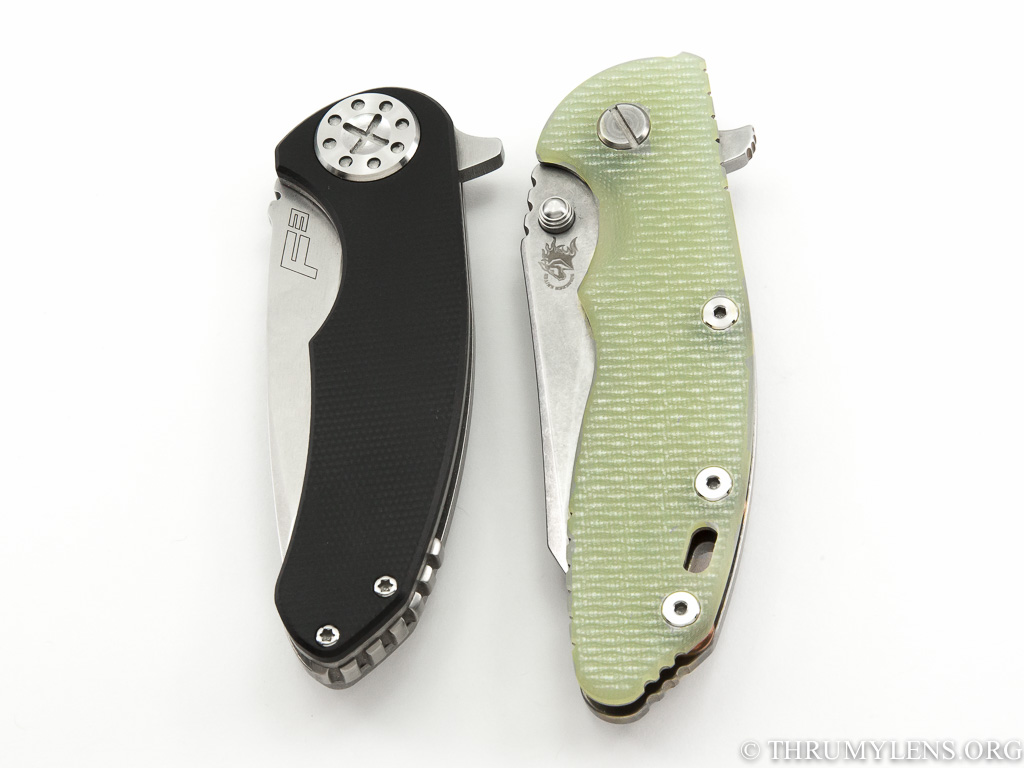
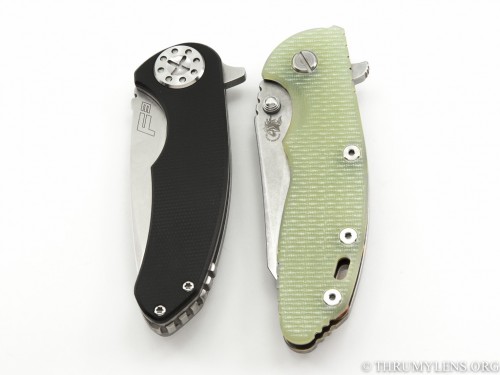
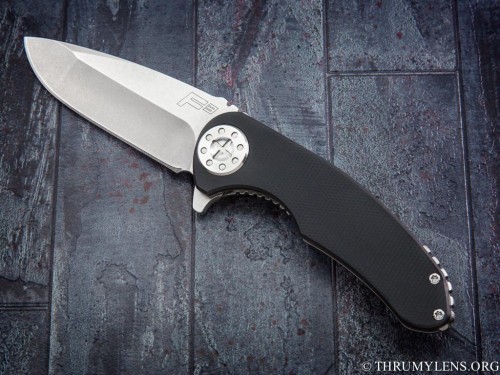
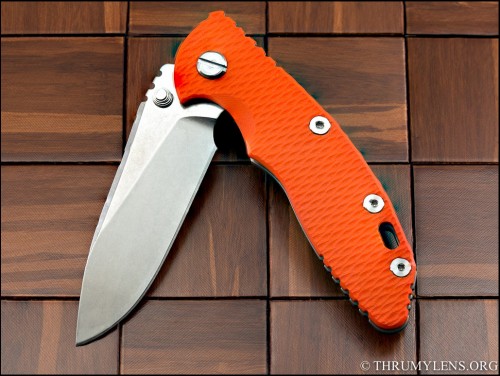
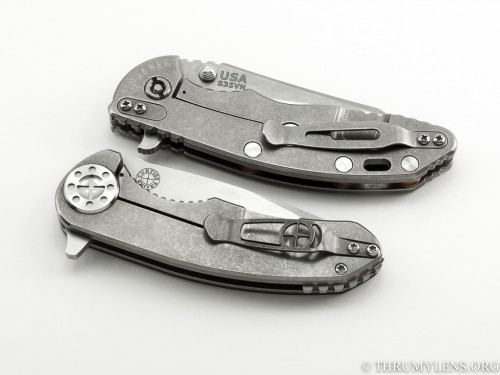
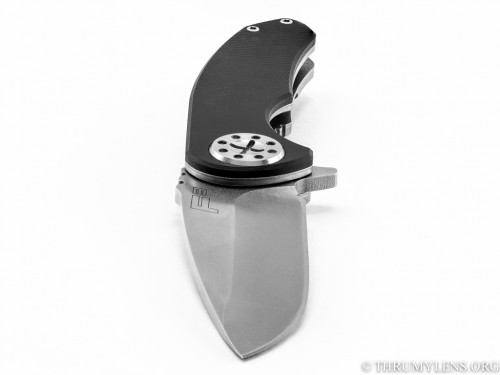
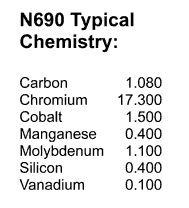

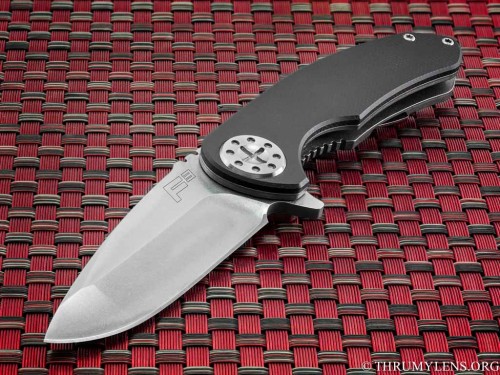
0 Comments